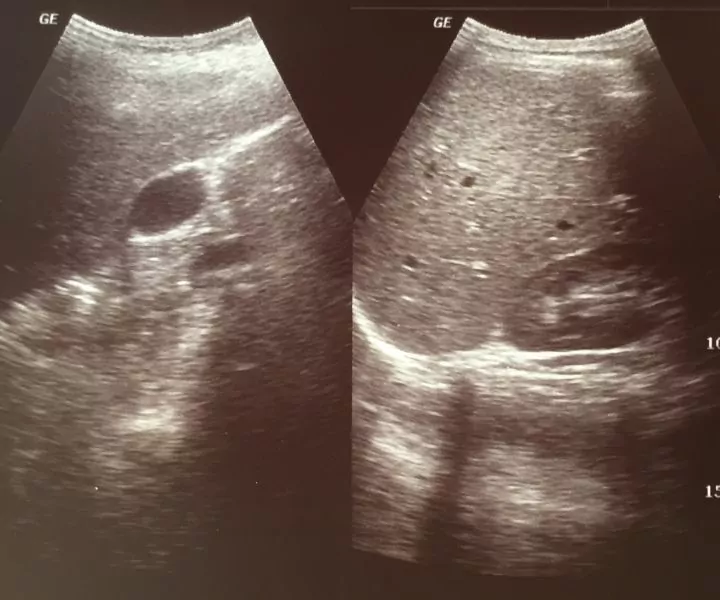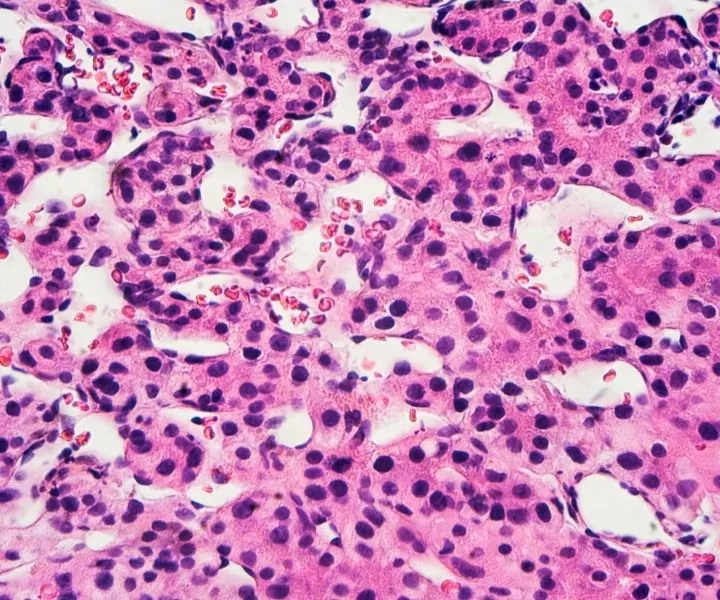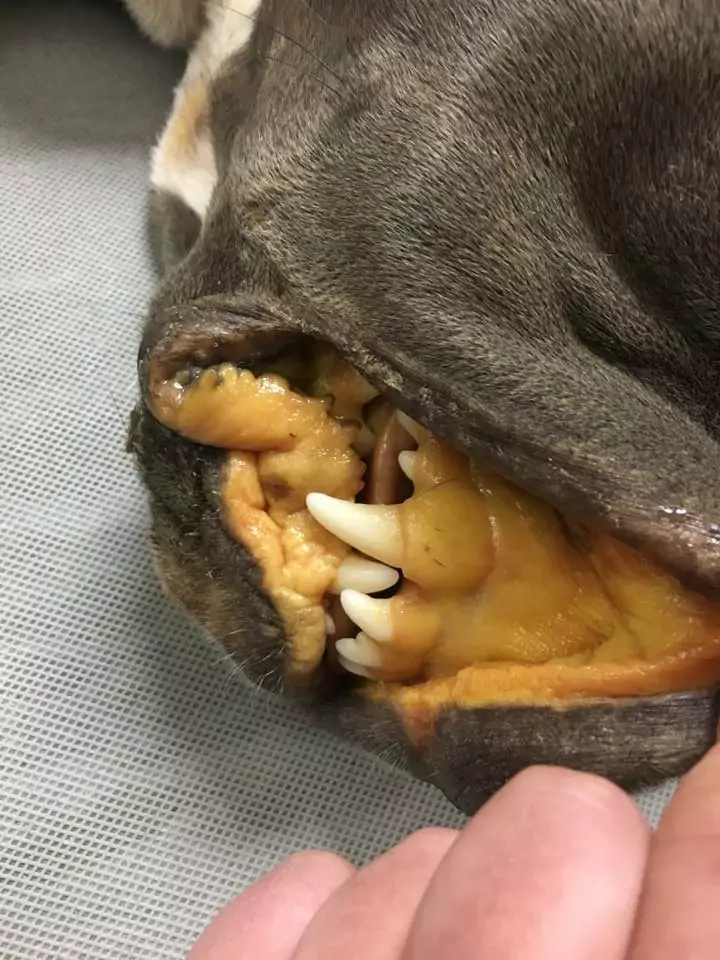Does Elevated Liver Enzymes Mean a Serious Problem With My Dog’s Liver?
Elevated liver enzymes in dogs can be a concern for some owners as they can indicate disease, however, liver enzymes can become elevated from a range of different causes and they don’t always mean there is a serious problem.

When liver function is checked this is usually done by measuring certain liver enzymes. When your veterinarian “runs blood” they will oftentimes be checking the function of many of your dog’s vital organs.
The liver is a large organ found in the upper abdomen near the ribs of dogs, the liver is a very important organ and performs many important functions in the body every day. All blood that leaves the intestines passes through the liver to be filtered.
The liver produces important products such as glucose, albumin (a type of protein), and cholesterol. Waste products are expelled from the liver into the gallbladder where they are stored before being released, along with digestive enzymes through the bile ducts into the intestines as bile.
A problem with the liver can be life-threatening and require intensive treatment but at the same time, the liver has an extremely good ability to regenerate so it can recover quickly from an onslaught once it is removed.
In this article, we are going to cover the causes of liver enzymes, what enzymes we test and what your veterinarian does with the information they collect. Once you have a better understanding of liver enzymes we will also cover the symptoms of liver disease and what treatments there are available to help keep you better informed.
What are the Causes of Elevated Liver Enzymes in Canines?
Liver enzymes can be elevated for a large number of reasons, broadly these causes are broken up into two different categories hepatic and extrahepatic.
Below is a list of some of the possible causes of elevated liver enzymes in dogs.
Hepatic means inside the liver. The liver can become diseased from a large number of causes.
- Infectious hepatitis can be caused by viruses and bacteria.
- Tumors in the liver can cause elevated liver enzymes as they begin to affect the organ’s function, some tumors can take a long time before changes are seen in bloods meaning the tumor can be quite large at diagnosis.
- Toxins such as paracetamol, xylitol and some blue-green algae (cyanobacteria) and mushrooms.can cause elevated liver enzymes.
- Trauma to the abdomen for example from being hit by a car can crush the liver and cause damage to the cells in the liver which can cause elevated liver enzymes.
- Breed-specific diseases can cause elevated liver enzymes, for example, the Bedlington Terrier can have problems with storing copper, Doberman Pinchers can cause idiopathic chronic hepatitis, and Maltese Terriers can be more likely to develop congenital portosystemic shunts.
- Nodular hyperplasia is a common benign change to the liver in elderly dogs, there is no treatment required but it can cause elevated liver enzymes.
- Portosystemic shunts occur when a vein connects the blood supply from the intestines to the heart bypassing the liver (shunting). It can be congenital or acquired and causes liver dysfunction due to reduced blood supply, leading to elevated liver enzymes.
Extrahepatic means outside the liver, diseases in other organs can affect the liver causing elevated liver enzymes despite no actual liver disease.
- Endocrine disease such as hyperadrenocorticism and hypothyroidism can cause elevated liver enzymes despite being diseases of the adrenal gland and thyroid gland respectively
- Gastrointestinal disease such as pancreatitis and inflammatory bowel disease (IBD) can cause elevated liver enzymes due to inflammation in nearby organs (the pancreas and intestines)
The Four Liver Enzymes in Dogs
There are four liver enzymes that are tested in dogs, these enzymes differ in where they come from and can give us valuable information about certain diseases occurring in the liver, however they can also be elevated from other causes and elevations sometimes don’t give the whole answer.
These four enzymes are broadly divided into two groups, those that become elevated when there is damage to the liver cells (hepatocellular enzymes) and those that become elevated when there is a problem with the bile duct (cholestatic enzymes)
Hepatocellular enzymes

AST or aspartate aminotransferase can be elevated when there is damage to the liver cells (hepatocytes) but also when there is damage to other cells in the body such as muscle cells. This enzyme is less commonly tested because it can be elevated due to non-liver causes and typically parallels ALT which is more specific meaning veterinarians usually rely on the information ALT provides instead.
Non-liver elevations of AST can be pancreatitis and muscle disease.
ALT or alanine aminotransferase is a useful enzyme because it is found primarily in hepatocytes meaning an elevation of ALT on blood can more clearly indicate liver disease. ALT is also produced by the kidneys and intestines. When there is damage to the hepatocytes, ALT is released into the blood and can be measured on blood tests (biochemistry).
Elevation in ALT shows there has been damage to the hepatocytes but that doesn’t mean there is definitely liver disease as diseases outside the liver can cause elevated ALT also (pre-liver). Examples include heart disease, intestinal inflammation, and severe dental disease. In general, these pre-liver problems will only cause minor elevations in ALT whereas true liver disease will cause a larger elevation.
Because ALT is more specific to liver disease at high levels a large elevation of ALT is a sign to investigate possible liver disease further. Severe increases of ALT don’t automatically mean irreversible damage, it is possible for liver function to return to normal with appropriate treatment, thanks to the regenerative capacity of the liver.
Examples of diseases that cause hepatocellular disease include certain toxins, chronic inflammation (hepatitis), and genetic disorders
Cholestatic enzymes
Cholestatic enzymes are those found in the bile duct that extends from the liver.
ALP or alkaline phosphate is contained in cells that line the bile ducts, blockage of the bile ducts (cholestasis) causes increased production of ALP leading to an elevation seen in blood work. Elevated levels of ALP don’t always indicate a problem with bile flow as there are many forms of ALP produced in the body including from bones (B-ALP), as well as steroid-induced ALP (C-ALP). Some breeds can naturally have elevated ALP, such as Miniature Schnauzers, Huskies, and Scottish Terriers.
Other non-liver-related diseases can also cause elevations in ALP such as pancreatitis, gallbladder disease (where bile is produced), and certain endocrine (hormonal) diseases.
ALP is the least liver-specific enzyme but also the most commonly elevated liver enzyme meaning it can cause concern of liver disease without being true. An elevation in only ALP may not signify a liver problem and may not require further investigation.
GGT or γ-glutamyl transpeptidase is another enzyme contained in the cells that line the bile ducts and can also become elevated when there is cholestasis. GGT levels typically parallel ALP levels and having elevations in both suggests cholestatic. GGT is a very sensitive indicator of liver or bile disease and can be useful to confirm that a problem is not liver-related, if GGT is not elevated then liver disease may not be the problem.
Examples of diseases that cause cholestatic disease include nodular hyperplasia, toxins, neoplasia, and gallbladder problems (e.g. gallbladder mucocele).
What Does Your Vet Evaluate When Looking at Liver Values?
Each animal and its liver values are considered individually and a specific plan is considered prior to discussion with owners. When blood results are received typically your veterinarian will look at and evaluate each test run and look for abnormalities as well as what’s normal, as both parts can show very important information.
Liver values will be assessed alongside a thorough history and physical exam to see how they compare to the clinical picture. Elevations in liver enzymes can indicate liver disease but can also be normal for certain animals or show problems with other organs.
If the liver values show elevations further diagnostics are often required to confirm the liver disease and get a diagnosis. In some cases, veterinarians may recommend no further investigation if the liver values are only slightly elevated or there’s a known cause (e.g. growing dogs will often have elevated ALP due to the B-ALP a serotype produced by bones).
If the dog is clinically well and the history has no cause for concern then this may influence how seriously a veterinarian takes changes in blood results compared with a sick dog with a history of signs associated with liver disease.
The Typical Patterns of Clinicopathological Changes in Dogs With Liver Disease
In a dog with liver disease, the typical patterns seen will differ with where the disease lies, there will be differences depending on if the liver, bile duct, or both is affected. Once liver disease is suspected further tests may be performed to help confirm liver dysfunction and get a diagnosis to aid treatment.
It is important to note that there can be no clinicopathological changes in some dogs with liver disease due to the large reserve capacity that livers have, this means even with the disease the liver can continue to function normally and it may require more severe, widespread disease before it can be detected with testing.
Some common tests and their findings are listed below:
Biochemistry
- Severe elevations of AST and ALT with normal-mild elevations of ALP and GGT can show signs of hepatocellular disease.
- Severe elevations of ALP and GGT with normal-mild elevations of AST and ALT can be a sign of cholestatic disease.
- Elevations of bilirubin can show hepatobiliary disease.
- Low levels of cholesterol and albumin (products of the liver) can show liver disease.
Complete blood count
- Signs of inflammation can be a sign of hepatocellular disease.
- Hemolysis can be detected with is a cause of an extrahepatic increase in liver enzymes.
Urinalysis
- High levels of bilirubin can show hepatobiliary disease.
- Urate crystals seen in the urine can be a sign of a portosystemic shunt (not specific).
- A low concentration of urine can be seen in dogs with hepatic insufficiency and portosystemic shunts.
Imaging
- Radiographs may show an enlarged liver or signs of masses on the liver.
- Ultrasound is typically more sensitive to liver disease and may show diseases such as gallbladder stones or mucoceles, and portosystemic shunts. It is important to note that a diseased liver can look normal on ultrasound.
- Computed tomography (CT) and Magnetic Resonance Imaging (MRI) can be useful for detecting liver changes associated with certain diseases.
Other clinicopathologic tests include bile acid stimulation tests, cytology, histology, and checking clotting times.
Symptoms of Elevated Liver Enzymes in Dogs
There are many possible signs and symptoms of elevated liver enzymes in dogs, some more specific to liver disease and others more general to sick dogs. All signs can be valuable in diagnosing liver disease and they are listed below:
Signs of elevated liver enzymes
- Jaundice is the yellow coloring of mucous membranes (eyes, gums) that occurs when there is elevated bilirubin in the blood. Bilirubin is a breakdown product from red bloods cells meaning an animal can be jaundice from hemolysis or liver disease but either way, it is a cause for concern and further investigation.

- Inappetence and vomiting can occur as liver enzymes and toxins build up in the blood causing nausea.
- Seizures can occur with liver disease as toxins that the liver would normally remove build up in the bloodstream and affect the brain, this is called hepatic encephalopathy.
- Fluid buildup in the abdomen (ascites) albumin is a type of protein that is produced by the liver. When there is liver disease, albumin can stop being produced, this can lead to fluid build-up due to not enough protein in the blood to help retain water and it leaks out.
- Lethargy can occur with liver disease as animals feel unwell.
Any dog that is unwell should be seen by a veterinarian, liver disease can not be fully confirmed from looking at a dog without further workup so bloods are often the best next step.
Treating High Liver Values in Canines
There are many diseases that cause high liver enzymes in dogs, this means there are many different treatments for elevated liver enzymes in dogs.
For hepatic disease, the treatment may vary depending on the severity of the disease.
In some cases with mild elevations with no symptoms treatment may be delayed and instead, the patient might be monitored with repeat bloods in a few weeks or months.
In more serious cases hospitalization might be required with aggressive fluid therapy and medications. Surgery might be required in cases such as gallbladder stones or cancer.
Infectious hepatitis would likely be treated with antibiotics and possibly hospitalization.
For extrahepatic disease, the problem that is causing elevated liver enzymes needs to be addressed first before the enzymes start to decrease, this could involve hospitalization, medication, or surgery.
For example, a dog with hemolytic anemia might need a blood transfusion, hospitalization, and medication to stop the hemolysis. Once the hemolysis is stopped and the dog is stable then liver enzymes will start to decrease.
Healthy Dog Liver Enzyme results
Liver enzymes are shown on blood tests as a number with a normal range next to them, this normal range represents the expected levels seen in the vast majority of cases. If your animal has normal liver enzymes we would expect them to be as shown below.
| Liver Enzyme | Example Level | Range of Normal Liver Enzyme |
| ALT | 75 | 18-121U/L |
| AST | 30 | 16-55U |
| ALP | 100 | 5-160 |
| GGT | 3 | 0-13 |
As you may have discovered throughout this article elevated liver enzymes don’t always mean your dog has liver disease and are just one diagnostic tool your vet will use to help your pet. If your dog has bloods that show high liver enzymes, don’t panic, chat to your vet and make a plan to get more information, and go from there.
If you see any symptoms or signs of illness or liver disease in your dog you should always get them checked by your veterinarian to ensure they are healthy.
